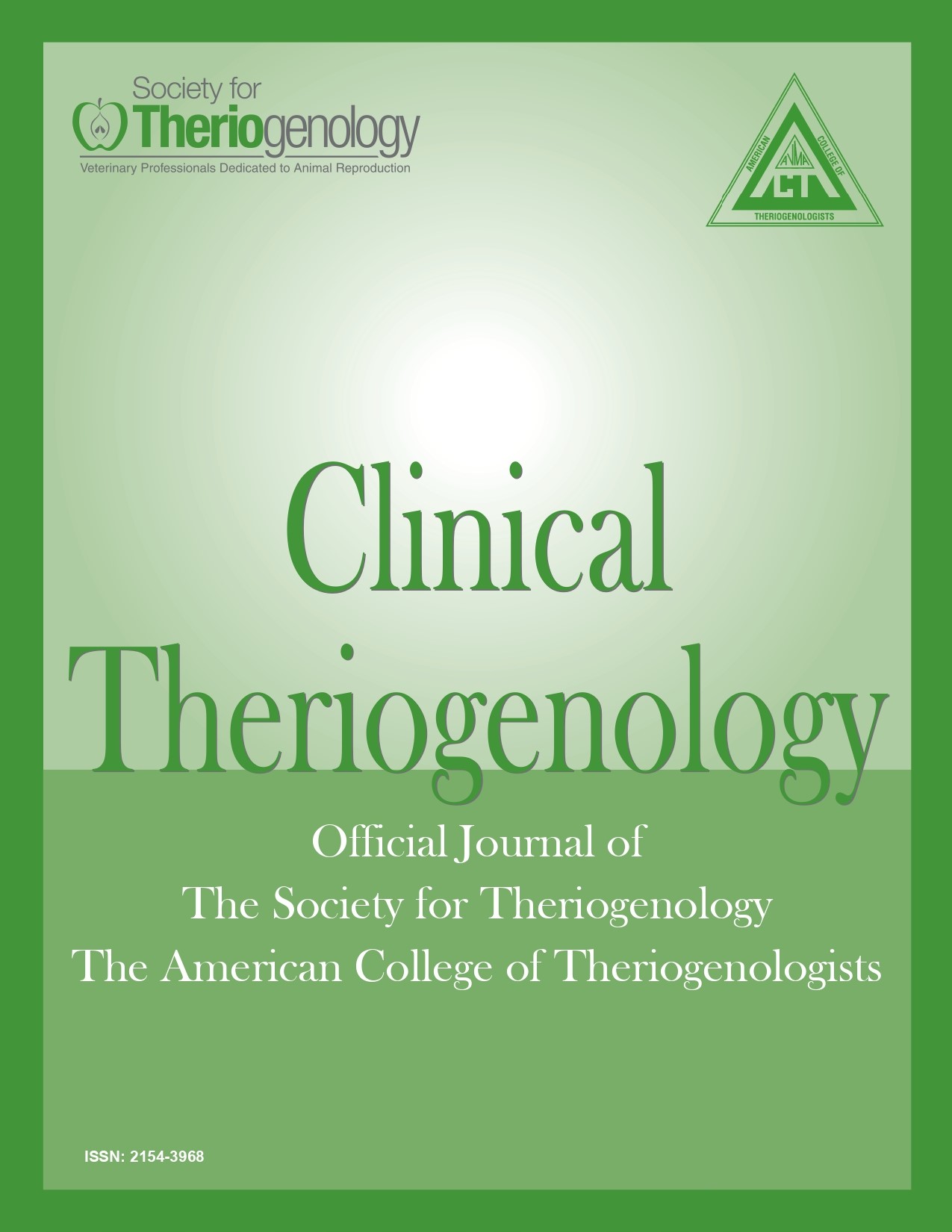Oxytocin or prostaglandin failed to improve pharmacologically induced ejaculation in stallions
Abstract
Pharmacologically induced ejaculation is utilized in stallions when traditional semen collection procedures are not appropriate or not effective. Most common protocol includes oral imipramine hydrochloride, with intravenous xylazine hydrochloride given 1 - 2 hours later. Goal was to document success rate from past clinical experience (historical data) and to determine whether addition of oxytocin along with xylazine or a prostaglandin analogue prior to xylazine treatment would enhance success rate in aged stallions in a clinical setting. Semen was successfully collected in 3 of 7 aged stallions using the standard protocol. In the modified protocol, 22 times (out of 50 attempts) semen was successfully collected from 12 stallions. However, addition of oxytocin or a prostaglandin analog had a deleterious effect on passive emission of semen.
Downloads

This work is licensed under a Creative Commons Attribution-NonCommercial 4.0 International License.
Authors retain copyright of their work, with first publication rights granted to Clinical Theriogenology. Read more about copyright and licensing here.





